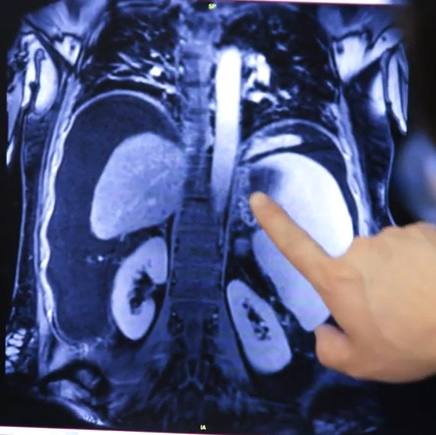-

Mayo Clinic Study Reverses Current Thought on Treatment of Cirrhosis
ROCHESTER, Minn. — Researchers at Mayo Clinic released a new study reversing current thought on the treatment of cirrhotic patients with type 2 diabetes. The study found that the continuation of metformin after a cirrhosis diagnosis improved survival rates among diabetes patients. Metformin is usually discontinued once cirrhosis is diagnosed because of concerns about an increased risk of adverse effects associated with this treatment in patients with liver impairment. The Mayo Clinic study was recently published in Hepatology.
Cirrhosis is scarring of the liver caused by forms of liver diseases, such as chronic viral hepatitis, chronic alcohol abuse and non-alcoholic fatty liver disease. This condition is the consequence of damage done to the liver over many years. As cirrhosis progresses, more and more scar tissue forms, impeding proper liver functions.
Metformin is used to treat high blood sugar levels caused by type 2 diabetes. This type of diabetes works in two ways. First, it inhibits the pancreas from producing sufficient insulin, which normally regulates the movement of sugar, glucose, into cells. Glucose is the body’s main source of fuel. Second, in type 2 diabetes the liver, muscle, and fat tissues become more resistant to the effects of insulin. The combination of decreased insulin production and insulin resistance results in an abnormally high level of glucose in the blood.
Obesity-related fatty liver disease can lead to liver inflammation and cirrhosis, and also is associated with diabetes. Therefore, type 2 diabetes is found in 37 percent of cirrhotic patients, five times more than in those without cirrhosis.
In the study, a sample of 172 patients continued taking metformin, while another 78 individuals discontinued metformin after cirrhosis diagnosis. Patients who continued metformin as part of their treatment had a significantly longer median survival than those who stopped taking the drug. During the follow up, it was discovered that none of the patients taking metformin developed lactic acidosis, which was thought to be a common side effect of the drug in patients with cirrhosis.
“Our study suggests that metformin can be used safely in cirrhotic patients. Diabetic patients who take metformin to control their blood sugar levels can continue taking metformin after cirrhosis diagnosis, if there is no specific contradiction,” says gastroenterologist Lewis Roberts, M.B., Ch.B., Ph.D., senior author of the study.
With the potential implications for a major change in current clinical practice, the researchers plan to collaborate with more institutions and use nationwide databases to further validate the beneficial effects of metformin, according to Xiaodan Zhang, D.D.S., co-author of the study.
Other study authors include: William Harmsen, Teresa Mettler, W. Ray Kim, Rosebud Roberts, Terry Therneau, and Roongruedee Chaiteerakij.
###
AboutMayo Clinic
Recognizing 150 years of serving humanity in 2014, Mayo Clinic is a nonprofit worldwide leader in medical care, research and education for people from all walks of life. For more information, visit 150 years.mayoclinic.org, http://www.mayoclinic.org/ and newsnetwork.mayoclinic.org.
MEDIA CONTACT:
Brian Kilen or Chloe Piepho, Mayo Clinic Public Affairs, 507-284-5005, newsbureau@mayo.edu







